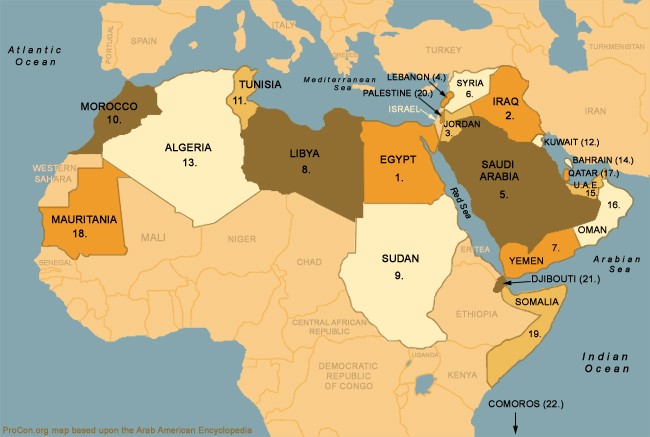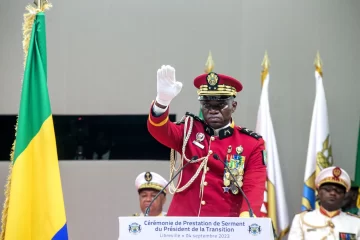A Short History of Yemen
It is the year 1962. A coup led by officers of the army has led to a tribal war splitting North Yemen in two. The Royalists, backed by Saudi Arabia, financed by Britain and the USA, are engaged in a conflict with the Republicans, equipped with Soviet fighter jets and joined by 70 000 Egyptian foot soldiers under the orders of President Nasser. A Republican victory was achieved only in 1968, but accepted by Saudi Arabia only in 1970. The conflict caused 200,000 casualties. This conflict draws two very important features: The first being the deliberate use of poison gas by Egyptian authorities, without differentiating between civilians and soldiers on duty. The second being the cold-war alliances of the time, pitting Egypt and the Soviets against their Saudi, American and British counterparts.

In 1963, a domino effect ensued in South Yemen. The Front for the Liberation of Occupied South Yemen (FLOSY) and the National Liberation Front (NLF) shook off the mantle of British rule, while each vying to attain control of the country. Egypt’s president Nasser backed the former, but the latter emerged triumphant after many violent confrontations. FLOSY then formed a government called the People’s Republic of South Yemen in 1967. 3 years later, in 1970 it was a Marxist faction of the NLF that changed its name to the People’s Democratic Republic of Yemen also known as PDRY.
Half a decade later, the situation has not changed much. Although Yemen united in 1990, it currently fulfils the characteristics of a failed state. The country’s legitimate president has fled the capital Sana’a, which is currently controlled by a militia that also asserts its authority over the northern part of the country.
There is no doubting the conflict in Yemen derives from historical and demographic differences between the North and the South. The states’ tribal structures have only further enflamed the situation. However, the parallels between Yemen and Syria do also resemble in a way. On another note, it is fueled from different sources, Yemen is just another playground in the Middle East for Saudi Arabia and Iran to demonstrate their military might by proxy, leading to the infuriating impression one gets, of a never-ending conflict in the Middle East’s poorest country.
The Beginning of the Conflict
Like many other Arab states, Yemen’s recent turmoil started in 2011. In Sana’a, the country’s capital, demonstrations against President Ali Abdullah Saleh escalated violently, with several ministers and military figures joining a growing tribal movement against a regime that had been in power for 33 years. In April 2011, the Gulf Cooperation Council (GCC), an alliance of Saudi Arabia, Kuwait, Bahrain, the United Arab Emirates, Qatar and Oman, had ratified a peace plan, accepted by Yemeni opposition, that granted Saleh immunity from prosecution and sent him into exile. Saleh had agreed to sign the peace plan, however in May of the same year he insisted on some modifications, refused to sign the deal and, as a result, large-scale fighting erupted between troops loyal to his government and opposition tribal militias.
On June 3rd, a bomb was detonated in the presidential palace leaving Saleh severely injured and requiring he be transported to Saudi Arabia for treatment. Saleh left his vice-president, Abd Rabbuh Mansur Hadi, in charge until his return. The incident did not cause an end to the bloody gun battles raging in Sana’a. With the situation worsening, Saleh returned and formally handed over power after an election in February 2012, in which vice president Hadi was the sole candidate, as arranged by a GCC agreement. Hadi would be charged with drafting a new constitution.

Later in February 2014, Hadi announced plans for Yemen to become a federation made up of six regions. Houthi insurgents, claiming they would be disadvantaged, immediately deprecated this statement. But who are these rebel fighters? And where do they come from? Houthis, also known as Ansar Allah, are part of a Shia’ sect known as Zaydi Muslims. Their name derives from Hussein Badr Eddin al-Houthi, a former MP who launched a rebellion against Saleh in 2004 and was killed 3 months later. There is no doubt that the Houthi ideology, is in many ways similar to that of Lebanon’s Hezbollah. It is a Shia group and is backed by Iran. Both groups adopt the same military doctrine and glorify the Khomeini Revolution of 1979. The Houthis uprising against the Yemeni government and its tribal allies sparked warfare and inter-militia fighting in their attempt to capture Sana’a in September 2014. The UN suggested a peace plan, in which the Houthis would withdraw from Sana’a and other cities once a new unitary government was formed. In the following weeks, Houthis stopped President Hadi and his ministers and put them under house arrests. The Houthis later, in January 2015, seized the national TV network and in February announced that they would form a presidential council consisting of five members to succeed Hadi. The latter had fled to Aden and his supporters would go on to designate the city as the de facto capital of Yemen.
The Houthi rebellion continued and by March 26th 2015, Hadi had taken refuge in Saudi Arabia. The monarchy in Saudi Arabia’s capital Riyadh had by then formed a coalition to counter Iran’s efforts. This coalition includes the UAE, Bahrain, Qatar, Jordan, Morocco, Sudan and Egypt and it began airstrikes on Houthi territory shortly thereafter. The US, once again implicated in Middle-Eastern combat, is a member of the coalition by proxy and is supplying intelligence and logistics to the coalition.
In February 2016, one of the more recent developments in the conflict in Yemen saw a Yemeni tribe, known as Men of Hamdan, pledge their support to the Houthis in an effort to counter Saudi aggression. Also, tribesmen from the southern part of the country have pledged union against what they call the ‘US-Israeli initiative” against Yemen.
Why Yemen?
• The Bab el Mandeb, also known as the Mandeb Strait is located between Yemen and Djibouti a key asset that both sides of the conflict are engaged over.
• It is one of the most crucial oil passage in the world. It is very small (29 Km wide at its narrowest), connecting the Red Sea to the Gulf of Aden and ultimately the Indian Ocean.
• In 2013, around 3.8 million barrels of oil passed through the waterway daily. This number grew to 4.7 million in 2015, demonstrating the importance of this strait and its crucial geographical location.
• An unstable Bab el Mandeb would oblige tankers to travel around the southern tip of Africa.
• The Suez Canal’s southern traffic also needs to pass through Bab el Mandeb, meaning the closure of the channel could have a cascade effect on the Egyptian Canal, in other words reducing passage in the Egyptian canal and reducing income. This sheds light on Egypt and Sudan’s justification for their involvement in the heavy bombing of Sana’a.
• A diversion of oil trade routes around the southern tip of Africa would see an increase in costs and time of delivery. European and North African oil would not be able to take the direct route towards Asian markets through the Suez Canal and Bab el Mandeb.
• Therefore, this explains US maritime presence in the area, in an effort to guarantee the flow of commerce, which is obviously in its interest.
The Houthis
Houthis, also known as Ansar Allah, are part of a Shia’ sect known as Zaydi Muslims. Their name derives from Hussein Badr Eddin al-Houthi, a former MP who launched a rebellion against Saleh in 2004 and was killed 3 months later. It is a Shia militia group and is backed by Iran. The Houthis uprising against the Yemeni government and its tribal allies sparked warfare and inter-militia fighting in their attempt to capture Sana’a in September 2014.
The Presidents
Ali Abdullah Saleh
- Saleh was president in power for 33 years (in North Yemen from July 1978 until May 1990 and under the Arab Republic of Yemen from May 1990 until February 2012).
- Like many Arab States, huge protests took place in 2011 in Yemen against Saleh’s government.
- In April 2011, the Gulf Cooperation Council (GCC), an alliance of Saudi Arabia, Kuwait, Bahrain, the United Arab Emirates, Qatar and Oman, had ratified a peace plan, accepted by Yemeni opposition, that granted Saleh immunity from prosecution and sent him into exile.
- Saleh had agreed to sign the peace plan, however in May of the same year he insisted on some modifications, refused to sign the deal and, as a result, large-scale fighting erupted between troops loyal to his government and opposition tribal militias.
- On June 3rd, a bomb was detonated in the presidential palace leaving Saleh severely injured and requiring he be transported to Saudi Arabia for treatment.
Abdrabbuh Mansour Hadi
- Hadi was Saleh’s vice-president and was left in charge until Saleh returned.
- With the situation worsening, Saleh returned and formally handed over power to Hadi after an election in February 2012, in which Hadi was the sole candidate.
- Hadi is a Yemeni Field Marshal and politician. He has been the President of Yemen since 27th February 2012. On 22 January 2015, Hadi resigned.
- Consequently, the Houthis seized the presidential palace and placed him under virtual house arrest.
- On 25 March 2015, Hadi reportedly fled Yemen in a boat as Houthi forces advanced on Aden. He arrived in Riyadh the next day, where he revoked his resignation as Saudi Arabia began a bombing campaign in support of his government.
- In September 2015, he returned to Aden as Saudi-backed government forces recaptured the city.





